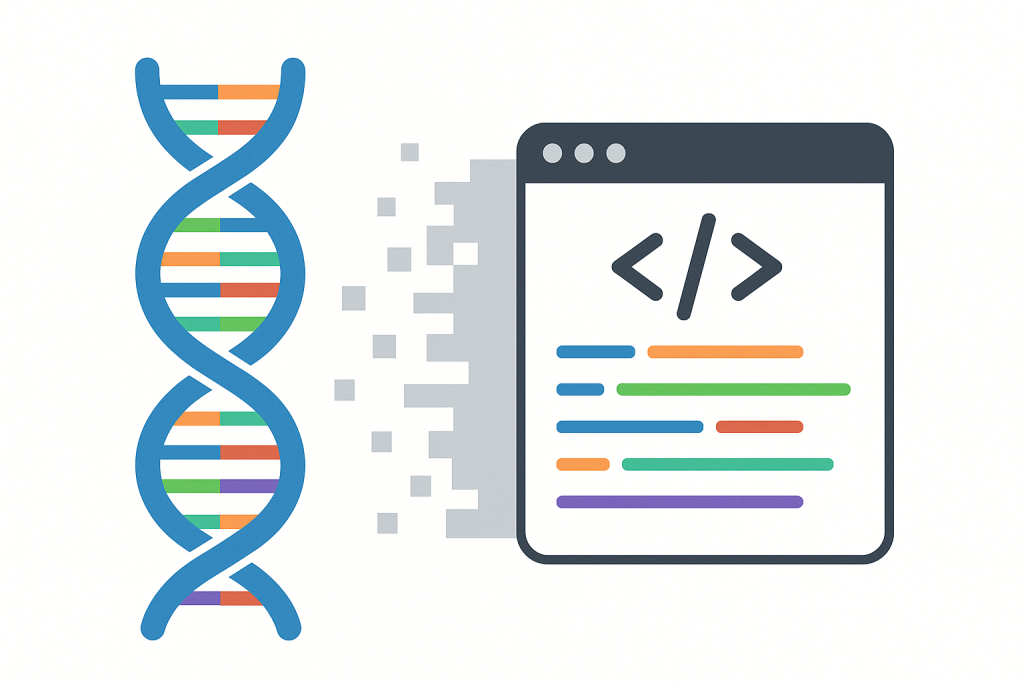The future of science education isn’t just digital—it’s biological.
From Computer Code to Genetic Code
What if learning to code didn’t stop at the computer?
Across forward-thinking schools and universities, students are beginning to design life itself—safely, ethically, and virtually. Using synthetic biology platforms and digital genetic modeling tools, they’re learning to “code” biological systems much like they would write a computer program.
Instead of building an app, they might model how a cell could glow under certain light conditions, or simulate how a genetic sequence might produce a specific enzyme. This isn’t science fiction—it’s the emerging field of biodesign education, and it’s transforming how we think about STEM learning.
Synthetic Biology Enters the Classroom
Once confined to research labs, synthetic biology is now accessible through simulation.
Virtual tools like Benchling, iBioSim, and Cello let students experiment with genetic systems in digital environments—no petri dishes or lab coats required. These platforms act as “biological IDEs” (integrated development environments), where learners can drag, drop, and simulate genetic logic using virtual DNA components.
Students can:
- Design circuits of living logic, like “if-then” statements for cells.
- Predict biological outcomes through computational modeling.
- Visualize DNA constructs without handling any real genetic material.
By merging biology and programming, classrooms are teaching how life itself is a form of code—with syntax, structure, and logic all its own.
A Safe, Ethical Sandbox for Future Biologists
Ethics is not an afterthought—it’s built into the lesson plan.
Students learning to code DNA also explore the ethics of creation: What should we build, not just what can we build? Teachers guide discussions around topics like genetic privacy, ecological responsibility, and biosecurity.
These programs use virtual-only simulations to ensure full safety while nurturing ethical awareness. It’s a rare combination: technical rigor, moral reasoning, and creative exploration—skills essential for tomorrow’s innovators.
Creative Learning: Biology as a Design Medium
DNA is becoming a new creative canvas.
In many classrooms, synthetic biology is taught alongside art, design, and engineering. Students prototype bio-inspired solutions—designing bacteria that could one day clean water or crops that self-heal from stress.
More importantly, they learn systems thinking: understanding how living systems adapt, evolve, and interact. This mindset mirrors coding principles like feedback loops, modularity, and debugging—but applied to life itself.
The Skillset of the Bio-Coder
Learning to code DNA builds a hybrid skillset unlike any traditional STEM track:
- Technical: Students master logic, modeling, and data analysis through genetic programming.
- Creative: They apply design thinking to living systems.
- Ethical: They navigate the societal impact of biological innovation.
The result is a new kind of literacy—bio-coding fluency—that blends scientific precision with moral imagination.
Preparing for the Bio-Digital Economy
Tomorrow’s economy won’t distinguish between biology and technology.
Careers in medicine, agriculture, materials science, and energy will increasingly depend on people who can understand and manipulate biological information safely and responsibly.
By introducing synthetic biology early, educators aren’t just teaching science—they’re cultivating a generation fluent in life’s operating system.
The Takeaway
Teaching students to code DNA isn’t about playing God—it’s about understanding nature through logic.
Synthetic biology education invites students to explore life as an information system, learn safely through simulation, and develop the judgment to innovate responsibly.
The next classroom revolution is already here—and its syntax is written in A, T, C, and G.
Coding DNA in education is how we prepare students to think, design, and act in the living future.


